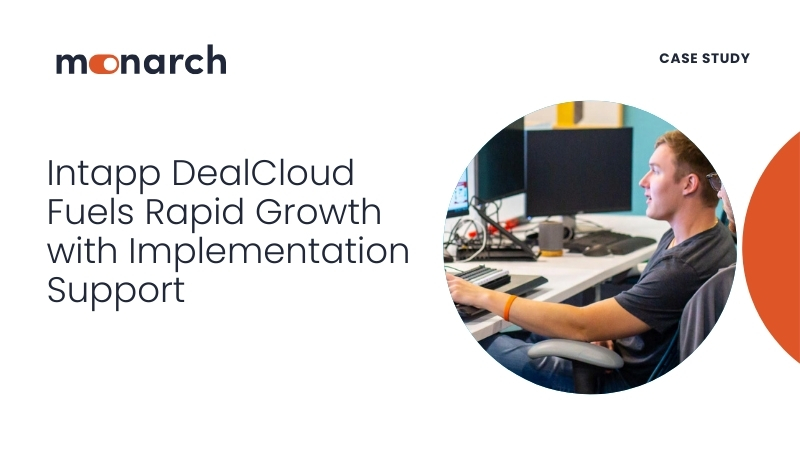In my work helping firms implement CRM systems, I’ve learned that market shifts do not just change deal flow. They expose how well a firm is set up to capture it. Some firms treat CRM as an afterthought, a place where contacts go to die. Others treat it as the knowledge hub that keeps partners aligned, accelerates deal sourcing, and turns scattered conversations into measurable ROI. The difference shows up most clearly when the market becomes more selective.
That is exactly the environment we find ourselves in today. The latest numbers show fewer but larger transactions, with total deal value climbing 45 percent year over year. Private equity drove nearly half of those high-value deals, and activity was concentrated in sectors like technology, consumer products, telecom, infrastructure, and power. At the same time, slowing growth, rate cuts, and policy uncertainty have created a backdrop of caution.
For mid-size firms, this creates both opportunity and risk. Bigger deals mean greater upside, but also greater competition. In this kind of market, efficiency in deal sourcing matters more than ever. And efficiency, I have found, almost always comes down to how well a firm uses its CRM to share knowledge, act on data, and create consistency across its teams.
The Pressures and Openings in Today’s Market
High entry multiples and regulatory scrutiny make it risky to chase every opportunity. Partners are deploying capital cautiously, while analysts are under pressure to justify every pipeline entry. Yet opportunities abound, especially where portfolio reshaping is in play. We are seeing more divestment-driven deal flow as PE exits accelerate, and AI adoption is creating a new layer of strategic relevance in many sectors.
This is where gaps in knowledge-sharing are most painful. At one firm I worked with, two partners each spoke to the same target CFO six months apart, but never logged their conversations in the system. By the time they realized the CFO was preparing a carve-out, another buyer had locked in exclusivity. Their problem was not a lack of contacts. It was a lack of coordinated visibility.
Contrast that with another firm that built dashboards to capture job-change alerts, competitive density, and ROI from events. When one of their contacts moved into a decision-making role at a potential target, the system flagged it. Outreach was immediate, and they secured a first meeting before competitors even knew the opportunity existed.
These two stories highlight the same truth: the firms that treat CRM as a strategic hub are the ones turning market uncertainty into deal-sourcing efficiency.
The Activator Advantage in Deal Sourcing
Industry research backs this up. In The Activator Advantage: What Today’s Rainmakers Do Differently, a study of nearly 3,000 partners across professional services found that most professionals fall into one of five business development styles, but only one, the Activator, consistently drives growth.
Activators embed business development habits into their daily workflow. They log every contact, leverage networks aggressively, and proactively deliver value long before a deal is on the table. In today’s M&A environment, those behaviors are especially powerful because client loyalty has eroded. Traditional rainmaking tactics are not enough.
I have seen firms transform when they encouraged Activator-like habits. At one, a senior associate made it routine to review CRM job-change alerts on Monday mornings. Within months, that simple habit generated two proprietary leads from executives he had known at former portfolio companies. He did not wait for introductions. He acted on data.
For mid-size firms, the lesson is clear. Activators thrive because they treat every interaction, every piece of data, and every follow-up as fuel for sourcing. And CRM is the tool that lets a whole firm act like Activators.
CRM as the Enabler of Activator Behaviors
Not everyone is wired to be an Activator, but CRM can level the playing field. When designed well, it does not just hold information, it nudges professionals toward the habits that drive deal flow.
The most effective systems I have implemented share a few common practices:
- Cadence goals and reminders that ensure outreach is steady, not sporadic.
- Event modules that track contacts, measure ROI, and surface competitive density.
- Relationship intelligence that uncovers hidden connections or potential buyer lists.
- Contact categorization into blockers, talkers, or mobilizers to sharpen engagement.
- Dashboards that integrate job-change and market data for proactive outreach.
When CRM is positioned as the firm’s knowledge hub, it shifts the culture. Business development stops being the responsibility of a few rainmakers and becomes part of everyone’s daily workflow. In short, CRM operationalizes the Activator Advantage.
Looking Ahead
The next 18 months expect more PE exits, more AI-driven opportunities, and continued regulatory complexity. Firms that rely on personality-driven sourcing will struggle to keep pace. For firms that want to win in this environment, the starting point is clear: decide which Activator behaviors matter most for your deal sourcing, and then build them directly into your CRM.
Want to know how well activator habits are embedded into your CRM?
Connect with Monarch, and we will conduct a CRM audit to identify gaps in your current system and develop a plan to turn your CRM into the engine of your next stage of growth.


